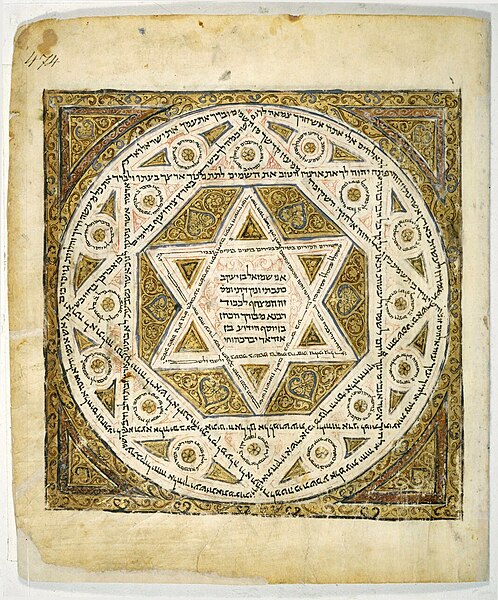The term parashah, parasha or parashat formally means a section of a biblical book in the Masoretic Text of the Tanakh. In common usage today the word often refers to the weekly Torah portion. This article deals with the first, formal meaning of the word. In the Masoretic Text, parashah sections are designated by various types of spacing between them, as found in Torah scrolls, scrolls of the books of Nevi'im or Ketuvim, masoretic codices from the Middle Ages and printed editions of the masoretic text.

A page from the Aleppo Codex, Deuteronomy 32:50–33:29. Parashah breaks visible on this page are as follows: {P} 33:1–6 (right column blank line 8th from top) {S} 33:7 (right column indentation line 23) {P} 33:8–11 (right column blank line 2nd from bottom) {S} 33:12 (middle column 1st indentation) {S} 33:13–17 (middle column 2nd indentation) {S} 33:18–19 (left column indentation at top) {S} 33:20–21 (left column space in middle of 6th line) {S} 33:22 (left column 13th line indentation) {S} 33:24–39 (left column 17th line indentation).

Two consecutive pages of the Aleppo Codex from the now-missing part of Deuteronomy were photographed in 1910 by Joseph Segall, containing the Ten Commandments. The image shows Deuteronomy 4:38 (גדלים) to 6:3 (ואשר), including the following parashah breaks: {P} 4:41 אז יבדיל {P} 5:1 ויקרא משה {S} 5:6 אנכי {S} 5:10 לא תשא {S} 5:11 שמור {S} 5:15 כבד {S} 5:16a לא תרצח {S} 5:16b ולא תנאף {S} 5:16c ולא תגנב {S} 5:16d ולא תענה {S} 5:17a ולא תחמד {S} 5:21b ולא תתאוה {S} את הדברים 5:22. These
Image of a modern Torah scroll open to the Song of the Sea (Exodus 15:1–19) with special layout visible.
A page of the Aleppo Codex was photographed in 1887 by William Wickes, containing Genesis 26:35 (החתי) to 27:30 (ויהי אך). It shows a single closed parashah break {S} at 27:1 (ויהי כי זקן יצחק); that parashah is in bold within the list below for Parashat Toledot.
The Masoretic Text is the authoritative Hebrew and Aramaic text of the 24 books of the Hebrew Bible (Tanakh) in Rabbinic Judaism. The Masoretic Text defines the Jewish canon and its precise letter-text, with its vocalization and accentuation known as the mas'sora. Referring to the Masoretic Text, masorah specifically means the diacritic markings of the text of the Jewish scriptures and the concise marginal notes in manuscripts of the Tanakh which note textual details, usually about the precise spelling of words. It was primarily copied, edited, and distributed by a group of Jews known as the Masoretes between the 7th and 10th centuries of the Common Era (CE). The oldest known complete copy, the Leningrad Codex, dates from the early 11th century CE.
Carpet page from the Leningrad Codex, the oldest complete manuscript of the Masoretic Text.
A page from the Aleppo Codex, showing the extensive marginal annotations.





